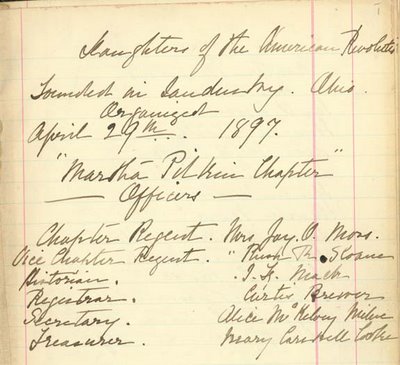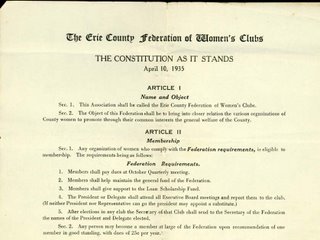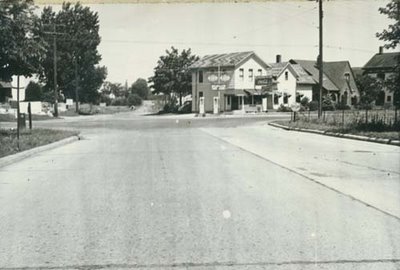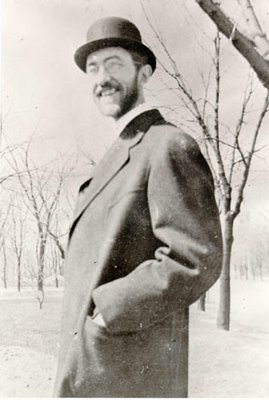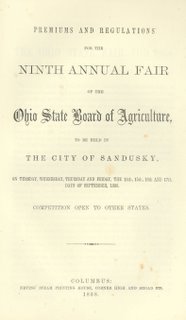
As many of you probably know the 2006
Erie County Fair begins on August 8, and has been held annually for more than 150 years. (Be sure to see the online exhibit,
Celebrating 150 Years of the Erie County Fair on the Library's website.) But did you know that Erie County once hosted the
Ohio State Fair?
The first Ohio State Fair was held in Cincinnati in October 1850. In its early years (1850-1874), the site of the fair was rotated among cities throughout the state. In 1858, it was Sandusky's turn to host the fair. The Ohio State Board of Agriculture selected Sandusky over Toledo, Zanesville, and Cleveland after a committee of local community leaders, led by
F.D. Parish, made the case for Sandusky during meetings in December 1857. The Board wanted to hold the fair in the northern part of the state that year, and Sandusky was selected because of its central location and easy accessibility by railroads from all over the state. The Sandusky fair was held September 14-17, 1858.
Much preparation went into developing the grounds and exhibition halls. The fairgrounds were placed on what was then the southeast outskirts of town -- Huron Avenue and Hancock Street were the main thoroughfares into the fair. The
Sandusky Commercial Register (August 5, 1858) noted with pride that "[s]even hundred stalls [for livestock] are to be erected on the Fair Grounds -- fully three hundred more than have been provided at any State Fair in Ohio." Additionally, there was a Farm Implement Hall, Mechanic's Hall, Floral Hall, and other exhibit buildings and tents, as well as a horse racing track. The Dining Hall, according to the
Register was "an almost interminable structure . . . capable of feeding an almost indefinite number of persons." Sanduskians expected thousands would come to the fair, and hotels and steamboat were prepared to accommodate the visitors. The West House, a huge hotel for the time, was opened in time for the fair. (One newspaper article estimated that around 16,000 people visited the fair on its busiest day, although that might be exaggerated.)
Along with the usual livestock and produce competitions, and displays of new farm implements and household devices, an interesting event was the "Female Equestrianism" competition. The first prize award was a "Side-Saddle, Bridle, and Martingal [sic] made by F.H. Francisco of Sandusky." Women who wanted to enter the competition were allowed to register "incognita." The newspaper article describing this event noted that '[t]he most celebrated physicians have declared their opinion that nothing contributes more to the development of health, bodily vigor, blooming beauty, and that grace of action which is impossible without strength of muscle, in which our American women are too deficient, than riding on horse-back."
Aside from some rain on a couple of the fair days, it appears that the Ohio State Fair in Sandusky was a success.
The Sandusky Library Archives Research Center holds a copy of the fair's regulations (shown above) and a catalog of cattle and horses to be exhibited, as well as a "diploma" issued to E.J. Messer for a threshing machine.
(I was hoping to have a couple more graphics for this post, but as is all-too-common, Blogger has failed to cooperate. Sorry.)
 In honor of the working men and women throughout the history of our community, this post commemorates Labor Day. Labor Day was first celebrated in 1882 in New York. It was made a national holiday in 1894.
In honor of the working men and women throughout the history of our community, this post commemorates Labor Day. Labor Day was first celebrated in 1882 in New York. It was made a national holiday in 1894.


 this blog
this blog





